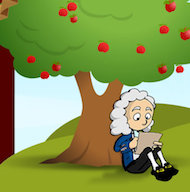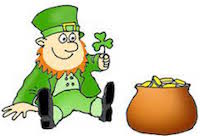Most trivia buffs know that the sandwich was invented by someone called the Earl of Sandwich. Who was this genius? And did he really invent the sandwich? And how do you become an Earl of something like a Club or BLT?
Well, as you might imagine, this is all complicated, but here goes….
Let’s get this our of the way right away — Do we call a sandwich a sandwich because of the 4th Earl of Sandwich? Yes. Was he the first person to come up with the idea? Not by a long shot. The truth is, we don’t know who invented the sandwich, but it has existed in various forms for thousands of years.
[One of the earliest known sandwich-eaters was Hillel the Elder, a rabbi and scholar who was born in Babylon and lived in Jerusalem during the first century B.C.]
Flatbreads have a long history in the Mediterranean region and the Middle East. In particular, the idea of rolling bread with a filling is very old in Turkish culture. During the mid-17th century, the 4th Earl of Sandwich traveled to Turkey and other regions in the Ottoman Empire, which may explain where he allegedly got the idea to ask a server to make him a sandwich back in England.
Sandwich is a borough in southeast England. In medieval times, and before, Sandwich was a main port in the county of Kent on the River Stour. Before the river dried up, it was wide and deep enough for big sailing ships. Today those ships have been replaced by smaller craft, but the ancient buildings make Sandwich one of the best preserved medieval towns in England. The name of the town is, most likely, Saxon in origin, and means something like sandy place or the place on the sand.
But getting back sandwich — the kind we eat. It’s not totally clear why the English politician John Montague, a.k.a. the 4th Earl of Sandwich became the namesake of the food we call a sandwich. I should clarify that hereditary English titles can be confusing. The family of the Earls of Sandwich has no real connection to the town itself — it’s just their title. The 1st Earl, Edward Montagu, originally intended to take the title of the Earl of Portsmouth. So I suppose had he done that, we’d be eating a portsmouth.
Since the 1st Earl decided on the name sandwich, the 4th Earl of Sandwich carried it on — he became a member of the House of Lords, served as Britain’s first Lord of Admiralty (the department of British government that once administered the Royal Navy,) and enjoyed an active social lifestyle. When he wasn’t busy with the affairs of government or his mistress, he loved to spend his time gambling. The story goes that it was during a 24-hour marathon gambling session that the hunger pangs — and world-changing inspiration hit him. Rather than interrupt his gambling, he thought to put some kind of filling between two slices of bread, so he could hold the concoction in one hand and his cards in the other. Some speculate the story may have been a rumor or adverse propaganda put forth by his rivals. But people may have started ordering “the same as Sandwich,” and the name stuck.
The sandwich isn’t the only thing that carried his name — Hawaii was originally knows as the Sandwich Islands. When Captain James Cook landed there, he named them after the 4th Earl, who was his financial sponsor.
Anyhow, after the word sandwich became popular, new words and phrases were needed to describe different types, like Sloppy Joes, Club and of course Peanut Butter and Jelly. The first known recipe for a peanut butter and jelly sandwich appeared in 1901 in The Boston Cooking School Magazine of Culinary Science & Domestic Economics.
So today the 4th Earl of Sandwich isn’t much remembered for his service in the House of Lords — but he’s certainly left his mark “in-deli-bly” at places like Subway.
— 30 —







